Have you ever found yourself wondering if your favorite pet is living in the best possible conditions?
Reptiles and amphibians are often challenging animals to keep. This leads many hobbyists and breeders to maintain them in minimalistic habitats so they can to minimize potential problems. In fact, many keepers are under the impression that a “sterile” vivarium setup is the only option.
But here’s the thing:
You don’t have to keep your reptile or amphibian in a spartan, utilitarian habitat. You can instead keep your pet in a natural-looking rainforest terrarium that resembles its wild habitat. Doing so isn’t as easy as maintaining a minimalistic habitat is, but it is much more rewarding. It may even be better for your pet.
You can design a terrarium to reflect any habitat; you just have to adapt the principles presented here and alter the specifics. Just be sure that the habitat you construct matches the natural habitat of your pet.
Vivaria Enclosure Options
Where to start?
A good enclosure is the first thing you’ll need when creating a vivarium setup.
There are a number of different vivarium tank options available to build a vivarium, and each one presents its own strengths and weaknesses – no single style is universally appropriate.
Here are the most common options to create a vivarium:
- Glass Tanks
- Commercial Enclosures
- Wooden Cages
- Screened Enclosures
Our best pick for a rainforest terrarium will be glass tanks and commercial enclosures. They are both great choices because they are built from materials that will not become damaged from constantly damp conditions. Check our dedicated article to find out more:
> Read More: Vivarium Tank Options
Lighting for Your Plants & Animals
Here the thing: lighting is one of the most important types of equipment you’ll need to think about when building a vivarium.
Unfortunately, vivarium lighting is a complex and confusing subject, which often bewilders novice keepers.
But be glad, you needn’t be intimidated by the topic! All you need to do is to dedicate a little bit of time to learn the basic aspects of vivarium lighting.
In our dedicated article, we’ll explain the most important aspects of vivarium lighting, including the types of light that reptiles, amphibians, and plants require. We also talk about the differences between the various types of vivarium lighting available on the market.
> Read More: Vivarium Lighting for Plants & Animals
Drinking Water, Pools and Relative Humidity
Let me guess, you already know that humidity is a key to the success of a rainforest terrarium and that most plants and animals require drinking water.
Fair enough, but do you know exactly how to provide them with the water they require and how to ensure that the air inside the habitat contains enough moisture?
To help you with that, we’ll discuss each of these needs separately but be aware that they’ll influence each other to some degree.
All you need to know about:
- How your pets drink water,
- How to mist your vivarium properly,
- How to create pools and reservoirs,
- How to simply filter the water,
- How to control the humidity of the habitat…
…is in the following article:
> Read More: Water, Pools & Relative Humidity in the Rainforest Vivarium
Heating the Habitat
Fact: most reptiles and amphibians are cold-blooded animals.
They depend on external sources of heat to drive their metabolisms and keep their bodies within the proper temperature range. This is why their habitat must provide similar conditions to what they experience in the wild.
Most rainforest-dwelling herps will require warmers temperatures than your room temperature. And even those who prefer cooler temperatures will still benefit from a thermal gradient. In all cases, you’d better use some type of heating device.
In the following article, we’ll discuss the best ways to provide suitable air and water temperatures for your pets. We’ll also explain what are the differences between ambient and surface temperatures, and how to create thermal gradients. Finally, we’ll lay out some of the best methods for controlling the vivarium’s temperatures.
> Read More: Heating the Vivarium
Substrate Selection
That’s right, substrate selection is a topic of considerable discussion and debate. Each reptile and amphibians keeper has his own preferences and recipes.
But as the art and science of vivarium design have matured, reptile and amphibian keepers have begun utilizing rather similar strategies.
We want to ensure the best living conditions for our pets but also for our plants in order to exhibit beautiful vivaria.
To do so, you’ll usually need to incorporate multiple substrate layers. The layers used in natural vivaria typically consist of the following three:
- A supportive, foundational layer,
- A growing medium,
- A surface layer.
Good news: we wrote a detailed article to help you chose your vivarium substrate.
> Read More: Best Rainforest Vivarium Substrates
Ventilation and Air Exchange
Plants draw carbon dioxide from the air and release oxygen, while animals breathe in oxygen and exhale carbon dioxide.
Question: Would it be possible to balance the plant and animal biomass in a vivarium to keep it sealed?
Well, theoretically it is.
But the truth is that few keepers will find this to be realistic in practice.
In fact, the air in your rainforest terrarium should be refreshed more or less constantly. This will ensure that all of the organisms in the habitat will remain healthy and thrive. It includes your pets, the plants and all of the microorganisms lurking in the substrate.
However, air exchange will directly impact a few other characteristics of the habitat. You’ll need to keep these in mind when setting up and building your vivarium.
In our dedicated article, we’ll explain how you can provide air exchange for the habitat and the problems related to an excessive or improper ventilation.
> Read More: Ventilation and Air Exchange in the Rainforest Terrarium
Background & Decoration
Finally, here comes the fun part!
After working hard to make your vivarium as functional as possible, it’s time to use your imagination to create an epic looking tropical terrarium.
This means decorating the vivarium so that it stops looking like an animal’s cage and starts to look like a rainforest.
It really isn’t difficult and ss long as the decorations are safe for your animals, the possibilites are endless because there are no rules to follow.
Rainforest-style decorations come in many different forms, but some of the most common decorative categories include:
- Backgrounds
- Waterfalls
- Wooden Items
- Rocks
- Plants
Remember: you don’t have to use all of those items. Keeping your vivarium simple is a good way to ensure a beautiful finish. You might also want to mimic nature by including elements from a specific area only.
Again, this is up to you: your animals won’t hold your aestethic choice against you. To help you make the good choices, we wrote the following article:
> Read More: Rainforest Vivarium Background & Decoration
Rainforest Vivarium Plants: Care & Selection
Want to know the secret of a stunning rainforest vivarium?
Mainly it is thanks to a good selection and a good care of your plants. Unfortunately, many keepers struggle to incorporate plants in vivaria.
Many keepers wonder how to select the best plants for the enclosure, as well as how to best care for the plants selected. Some also worry about the safety of some plant species.
Let’s be honest, we all killed a lot of plants during the learning process but, you know, mistakes pave the way for knowledge and growth.
What kind of plants can you add in a tropical terrarium? Well there are a lot, but here is a list of the most common plants:
- Ficus
- Bromeliads
- Ferns
- Orchids
- Arums
In the following article, I’ll try to share some of the most valuable tips and tricks I’ve found for maintaining plants in your pet’s habitat. You will also find more details about the plants listed above.
> Read More: 19 Wonderful Plants for your Rainforest Vivarium
The Bioactive Vivarium
What if you could mimic the biological cycles of a forest floor?
As the art of vivaria design and maintenance has matured, keepers have devised a number of interesting and exciting ways to create increasingly realistic habitats for their pets.
This not only includes things like maintaining multiple species in a single enclosure and setting up misting units and timers to create rainy weather. But some keepers have begun trying to recreate the biological cycles that occur on the forest floor.
These cycles involve the breakdown of wastes and dead organic matter by bacteria, fungi and an assortment of animals. This prevents the accumulation of wastes and organic debris and helps to free the nutrients contained therein so that they can be used by plants. Ultimately, this process helps to support the plants that form the base of the food chain and perpetuate the ecosystem.
However, these types of cycles rarely occur in traditional vivaria, as most keepers use relatively sterile substrates. The wood chips and soils used in such enclosures are largely free of the decomposing organisms that live on the forest floor.
Additionally, most keepers strive to keep their vivarium clean, so they remove their pet’s waste and other organic materials from the enclosure as quickly as is possible. Accordingly, very little decomposition takes place in traditional vivaria and few decomposing organisms are able to develop or maintain viable populations.
> Read More: How to make a Bioactive Vivarium?
Suitable Animals for a Rainforest Terrarium
Now that you understand the basic steps necessary to create a rainforest vivaria, you can begin thinking about the animals you’ll house in the habitat.
Some animals are much better suited for life in a naturalistic vivarium than others, so you’ll want to use care during the selection process to avoid as many problems as you can and to achieve the best results possible.
A few of the key things to consider when making your choice include:
- The animals must come from rainforests or similar habitats. You don’t want to place a Russian tortoise or some other savannah-dwelling critter in a hot and damp rainforest vivaria. Reptiles and amphibians who inhabit deserts and other arid habitats should also be avoided when trying to stock your rainforest vivaria.
- Small animals are typically easier to house in a rainforest vivaria than large animals are. It is important to use very spacious enclosures when designing naturalistic vivaria, and large animals can make this difficult to accomplish. For example, a 50- to 100-gallon habitat would be well-suited for a handful of small lizards or frogs, but you’d need a habitat three or four times this size to adequately house an adult boa constrictor or monitor lizard.
- You’ll want to use animals that will remain visible in a complex, well-planted enclosure. The plants and decorations in your vivaria will certainly be interesting to observe, but the animals should be the primary visual attraction for the enclosure. This means you’ll want to avoid very secretive species, who spend most of their time hiding. Diurnal frogs and lizards are typically among the best choices, and many tree-dwelling snakes are similarly well-suited for rainforest vivaria.
- Avoid venomous or otherwise hazardous animals. Although keepers with years of experience may be able to safely house venomous snakes or other dangerous animals in a realistic vivarium, beginners should never attempt to do so. These animals are challenging to maintain in even the most sterile habitats, and the complexity of naturalistic vivaria make it even more difficult to do so.
Best Suited Pets for a Tropical Vivarium
As long as you embrace the criteria mentioned above, you shouldn’t have much difficulty deciding which animals you want to keep in your vivarium. However, some of the best-suited species and groups of species for rainforest vivaria include the following:
- Poison dart frogs (Dendrobates, Phyllobates spp., and Ranitomeya spp., and others) Despite being poisonous in the wild, dart frogs lose their chemical weaponry after living in captivity for a short time.
- Mantella frogs (Mantella)
- Red-eye tree frogs (Agalychnis callidryas)
- Monkey frogs (Phyllomedusa)
- Day geckos (Phelsuma)
- Tokay geckos (Gekko gecko)
- Crested geckos (Correlophus ciliatus)
- Anoles (Anolis)
- Pygmy chameleons (Rhampholeon, and Rieppeleon)
- Stump-tailed chameleons (Brookesia)
- Leaf-tailed geckos (Uroplatus)
- Green tree pythons (Morelia viridis)
- Emerald tree boas (Corallus caninus)
- Amazon tree boas (Corallus hortulanus)
- Small carpet pythons (Morelia spilota)
Note that a few of these animals (including all of the snakes and many of the geckos) are nocturnal. However, they’ll often rest in visible locations, and you can incorporate red lights at night, which will allow you to observe their behaviors without upsetting their circadian rhythms.
The Costs Associated with a Rainforest Vivaria
Building a rainforest vivarium sounds great but do you have the budget for all of this?
It’s time to focus on logistical considerations – specifically the costs – you’ll encounter while building the habitat.
While there are many ways to shave costs and save a few dollars here and there, rainforest vivaria construction is rarely a low-cost endeavor. You’ll have to purchase myriad supplies and equipment, and many keepers suffer from sticker shock when tallying the various costs involved.
Nevertheless, vivaria construction is an incredibly rewarding activity, and the costs are certainly not prohibitive – even for students or others with tight budgets. But it is important to take a long, hard look at the costs you’ll face so that you can budget and prepare accordingly.
We’ve broken down the costs into several key categories, beginning with the enclosure and ending with some of the odds and ends for which keepers rarely plan into their budget. Obviously, the figures provided are only estimates, as every vivaria and keeper are unique, and prices will vary from location to location.
We’ll also provide you with several cost-saving tips, which may help you reduce your overall budget.
Enclosure
The enclosure will usually be the single most expensive part of the vivarium – it may even be more expensive than the animals that will call it home. Obviously, the size of the enclosure will significantly influence its cost, but the material from which it is constructed, and the design concept will affect the price too.
Glass aquaria are typically the most affordable of the primary enclosure options. This is particularly true for small- and medium-sized tanks. For example, you can often obtain a 10-gallon (~38 litres) aquarium for $10 to $20. However, most hobbyists will prefer aquariums in the 50- to 100-gallon (~190 to 380 litres) range. Enclosures this size will generally cost between $50 and $200, depending on the brand, glass thickness and your geographic location.
Commercially produced reptile and amphibian vivaria are usually more expensive than glass aquaria. Very small models will usually cost at least $50 to $75, while larger models may cost $300 to $500. However, these enclosures usually offer a variety of helpful features, and they are easier (and cheaper) to ship than glass aquaria. So, be sure to shop online to try to find the best value.
Custom-built terraria vary wildly in terms of price, based on the materials you use, and design features you implement. Keep things simple and you can probably create a medium-sized enclosure for about $50 or so. But, if you want to create a big, fancy habitat, you could easily spend several hundred dollars on the enclosure.
Lighting Devices
Lighting devices are likely the second most expensive items you’ll need for your rainforest vivaria. And while the fixtures and control devices you use will typically be one-time purchases, you’ll have to replace light bulbs periodically.
Depending on the style you choose, you can usually obtain light fixtures from home improvement stores for very reasonable prices. Dome lamp fixtures and fluorescent fixtures generally cost between $10 and $20. However, you’ll often have to settle for fixtures that look a bit “industrial” when shopping at these types of stores. You can purchase more polished looking fixtures at pet stores, but these will typically cost two to three times as much.
Light bulbs and tubes vary quite significantly in terms of price. You can purchase standard incandescent bulbs for a dollar or two, while standard fluorescent tubes may cost about twice as much. However, high-quality lights, including LEDs or UV-producing bulbs are often much more expensive. Many cost $50 or more and will have to be replaced every 6 to 12 months.
Heating Devices
Heating pads and heat tape are usually pretty affordable and rarely require replacement. You may be able to find a heating pad for a small vivarium for less than $20, but you may have to spend $100 or more to heat a large habitat. Radiant heat panels are often a bit pricey, and the smallest models usually cost at least $50 or so – large models may have price tags in excess of $200. However, the safety, convenience and value they provide often make such expenditures worthwhile.
You’ll also need rheostats, thermostats and timers to control and automate the temperatures and lighting for the vivaria. Rheostats are very affordable at home improvement stores and electronics supply stores. They’ll typically cost less than $10 at these types of places. However, you’ll need to know how to wire them up for this to be a viable option.
If you’d prefer the convenience of pre-wired rheostats, you’ll need to spend about $20 to $40 at your local pet store. Thermostats are best purchased through pet-oriented outlets, where they’ll cost between $30 and $200.
Although you may be tempted to select the cheapest thermostats you can find, remember that your pet’s health and life depend on them, so it is often wisest to select the best possible model you can afford.
Timers can be purchased at pet stores, but they’re rarely any better than the $5 models sold at big box retailers.
Water Pumps and Filters
If you are incorporating water features into the vivaria, you’ll need things like water pumps and filters. These devices run the gamut from affordable to shockingly expensive, depending on their size and capacity.
Be warned: You do not want to try to save money on these items – you want the best possible pumps and filters you can afford.
In fact, it is usually wise to purchase pumps and filters rated for two to three times the amount of water in the enclosure. In other words, if your habitat holds 20 gallons of water, you’ll want to select a pump and filter rated for 60 gallons.
Reptiles and amphibians often foul their water much more quickly than fish do, and you’ll need all of the filtering power you can get to keep the water clean.
Filters and pumps come in a number of different designs. Some are sold separately, while other units include both a pump and a filter mechanism. In either case, you can usually assume that you’ll need to spend at least $50 to obtain a pump and filter for a very small habitat. Larger habitats may necessitate equipment costing several hundred dollars.
You can often save a bit of money by shopping at home improvement stores, rather than pet stores. Just head over to the pond section and see what they have to offer.
Substrates and Base Layers
Substrates and base layers are generally pretty affordable, especially if you obtain them from home improvement stores or landscaping supply houses. On the other hand, you’ll spend a small fortune to purchase these items from pet stores and similar outlets.
For example, you may find that a 5-pound (~2 kg) bag of substrate costs $15 to $20 at a pet store. However, if you head over to the local hardware store, you’ll often find similar products (such as topsoil, gravel or cypress mulch) for a fraction of this cost. If you’re creating a small habitat, $10 to $20 should be more than enough to cover your substrate expenses. Larger habitats will require more substrate, but you’ll rarely find it necessary to spend more than about $50 – often, you’ll be able to get all the substrate you need for even less.
Decoration and Furniture
Decoration and furniture can be a bit pricey when purchased through commercial channels, but you can often find the things you need for free in your own backyard (more on this below). You can also seek out decorative items at home improvement stores, dollar stores and big-box retailers. Often, these items will be very reasonably priced at these types of outlets.
Just remember that the enclosure decoration is primarily for you, rather than your pet. Accordingly, you can adjust your plan and the supplies you purchase to suit your budget. You can also purchase supplies over time and add them as you acquire them.
If you are trying to save money, just try to avoid some of the more expensive decorative items. This would include things like corkbark, commercially produced vines and branches, and designer water bowls. Instead, use plenty of live or fake plants, live or fake moss and wood scavenged from your backyard.
Cost-Saving Tips and Tricks
While keepers with juicy bank accounts may not worry about saving money while constructing a vivarium, most real-world keepers will need to keep the costs under some type of budgetary threshold. Some of the best ways to do so include:
1. Avoid retail pet stores when shopping for items available through other outlets.
Pet stores often make a significant amount of their income from selling supplies. The animals are just a way by which they make you a customer; their true goal is to have you return week after week, purchasing substrates, food and other consumable items.
Accordingly, these items are often more expensive in pet stores than they are in other places. So, as mentioned above, it is often advantageous to seek these items out in big box retailers, home improvement stores and other such outlets.
Some of the items that are frequently available for less than they are in pet stores include:
- Cypress mulch
- Orchid bark
- Potting soil
- Topsoil
- Coconut husk
- Standard incandescent bulbs
- Fluorescent light bulbs
- Light fixtures
- Water bowls
- Water pumps
- Water filters
- Timers
- Thermometers
- Rheostats
- Silicone
By contrast, there are only a few things you’ll almost always need to purchase from a pet-related retailer. These include:
- UV-producing lights
- Radiant heat panels
- Thermostats (you can find thermostats through other outlets, but they won’t be designed for use in a vivarium)
- Proprietary substrates
- Decorative hiding places
- Decorative water bowls
- Cork bark
- Manzanita branches
2. Purchase Supplies in Bulk
Many keepers try to purchase the smallest supply quantities possible in an effort to keep their costs low. But while this may help you to keep your initial expenditures low, it will often increase the total amount of money you spend over time. Instead, it is almost always cheaper, in the long run, to purchase supplies in the greatest quantities possible.
For example, you may spend $5 on a small bag of sphagnum moss, which will last you for a month or so, or you could spend $20 on a large bag that may last you for more than a year. Similarly, a 5-pound (~2 kg) bag of gravel may only cost about $5 or $10, but if you spend $20 or $30, you could obtain 50 pounds or more.
Almost all consumable supplies will be cheaper when purchased in bulk, including light bulbs, filter media and cork bark. Obviously, bulk buying won’t work for all of the things you need – you only need one water pump, for example – but it makes sense to embrace the strategy whenever possible.
Note that bulk buying also provides another benefit: You’ll usually have backup supplies on hand. This will prevent you from having to make an impromptu trip to the pet store while you are performing vivaria maintenance.
3. Take Advantage of Sales and Seasonal Price Discrepancies
While you’ll have to purchase all of the basic supplies during a relatively small window when constructing the vivarium, you’ll want to start looking for sales and clearance events as soon as you finish. You may have all of the substrate or lightbulbs you need at the moment, but you’ll need to replace them as time goes on. By shopping in advance, you can take advantage of sales and save money in the long run.
4. Scavenge Free Items from Nature
Many of the things you’ll need for your vivaria are available for free in your own backyard. This includes everything from tree branches and moss to substrate and rocks. You may even be able to dig up shrubs or plants and transfer them into your vivarium. You’ll have to invest a little labor and time to do so, but this is often preferable to investing money.
Just be sure that you clean everything very thoroughly before adding it to your enclosure. This will help reduce the chances of introducing harmful insects, bacteria or fungi into the vivarium.
Now It’s Your Turn
Now that you learned how to set up a rainforest vivarium, it’s time to create your very own.
Just remember to keep your pet’s needs in mind while designing the habitat and you can’t go wrong – you’ll make mistakes, but mistakes often lead to innovation. And, don’t be afraid to implement your own ideas. Creativity and experimentation are key when trying to make a vivarium that stands out from the crowd and sticks in people’s memories.
We’d love to hear about the rainforest terraria you’ve created – tell us all about them in the comments below. Let us know what species the habitat houses and the major design features you included. Tell us about the creative ideas you’ve tried, including the ones that worked as well as those that didn’t.
And we’d appreciate one small favor: If you’ve found this article helpful, please share it with your reptile and amphibian keeping friends!
Main photo by Dũng Nguyễn Việt

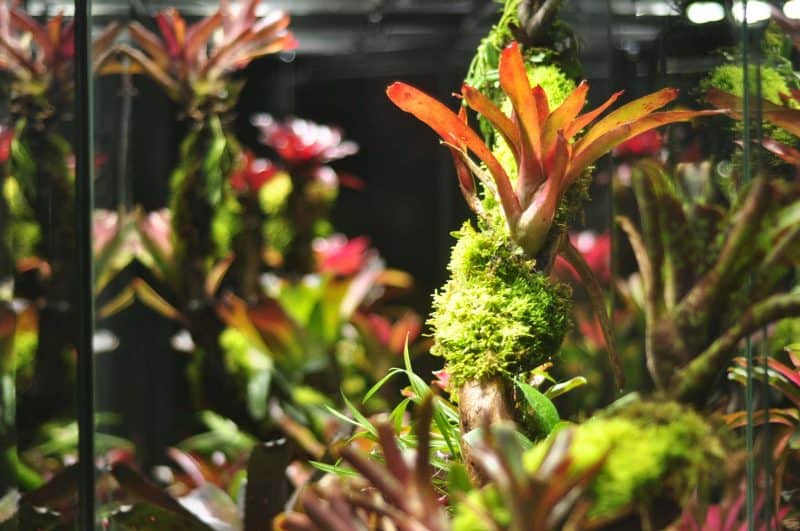










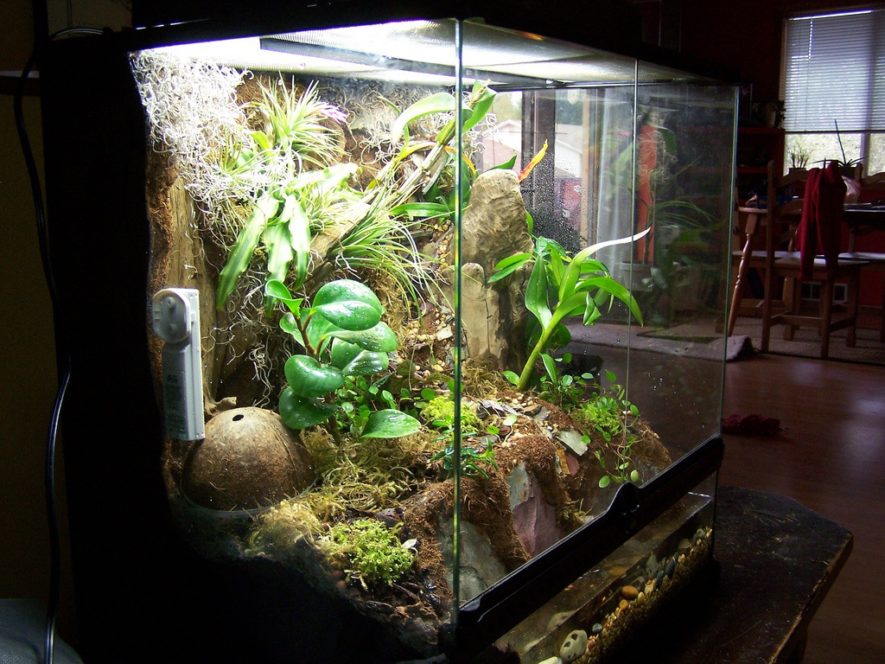
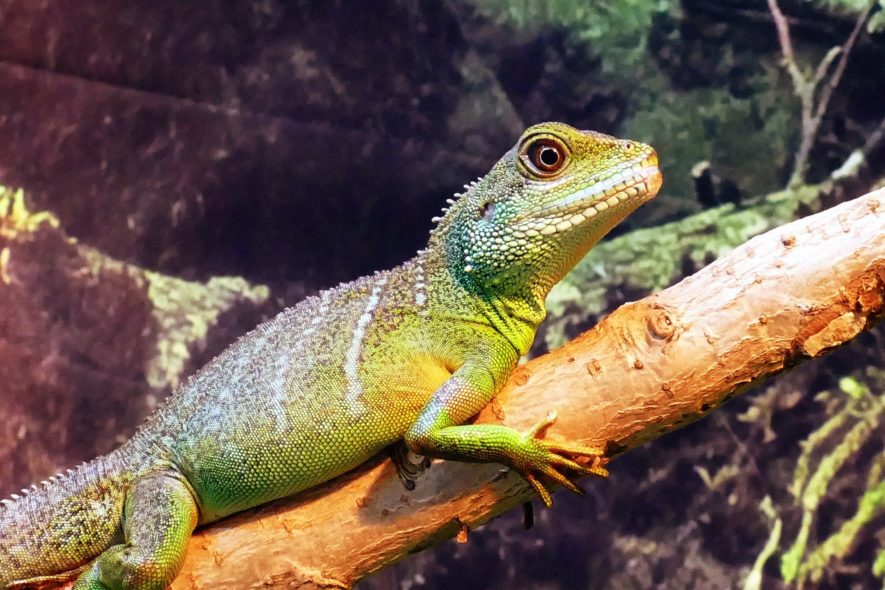
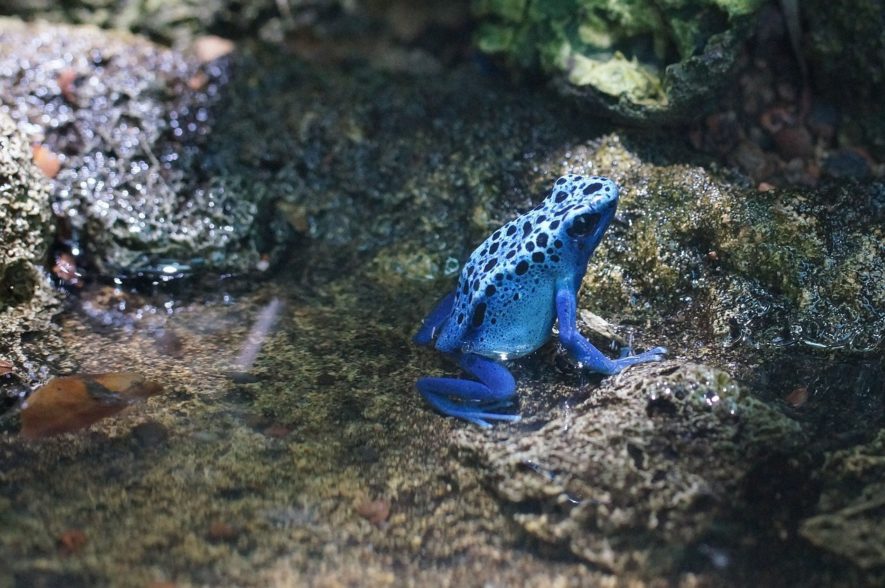
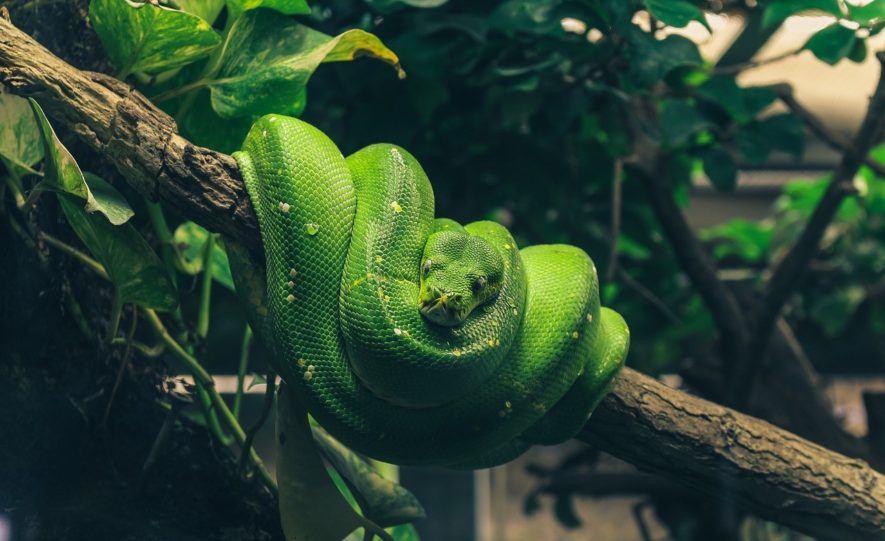

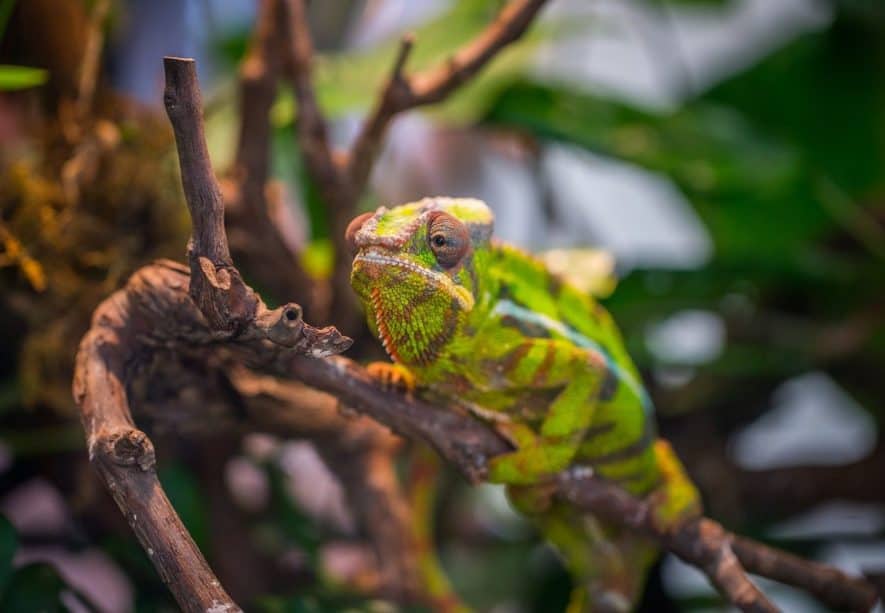
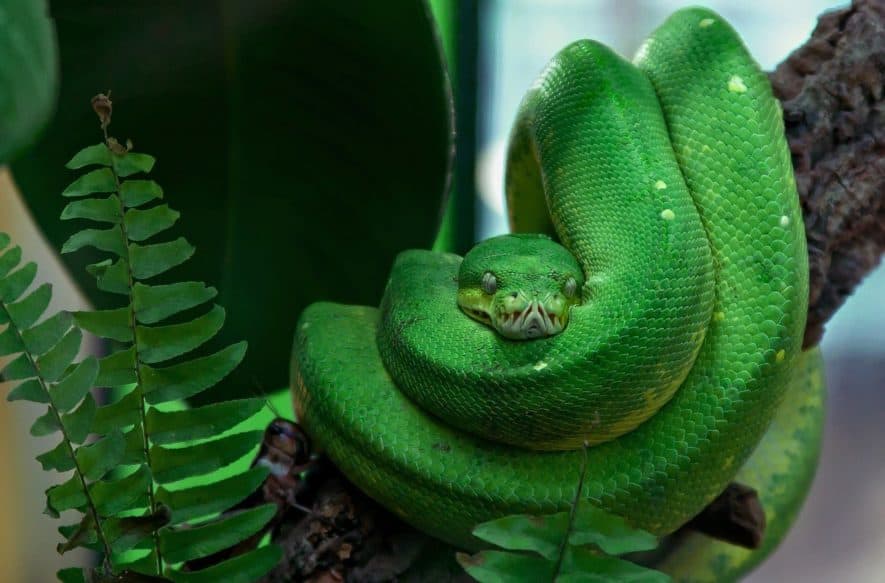
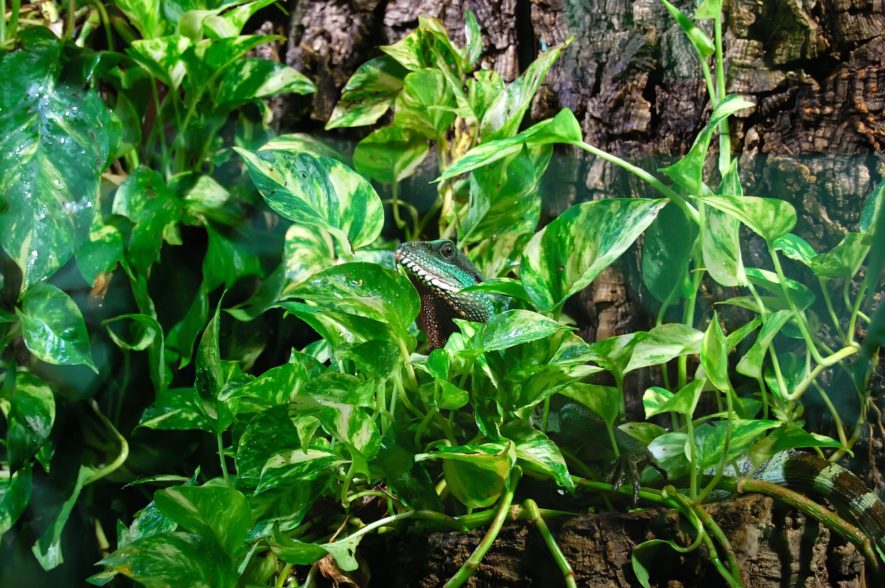

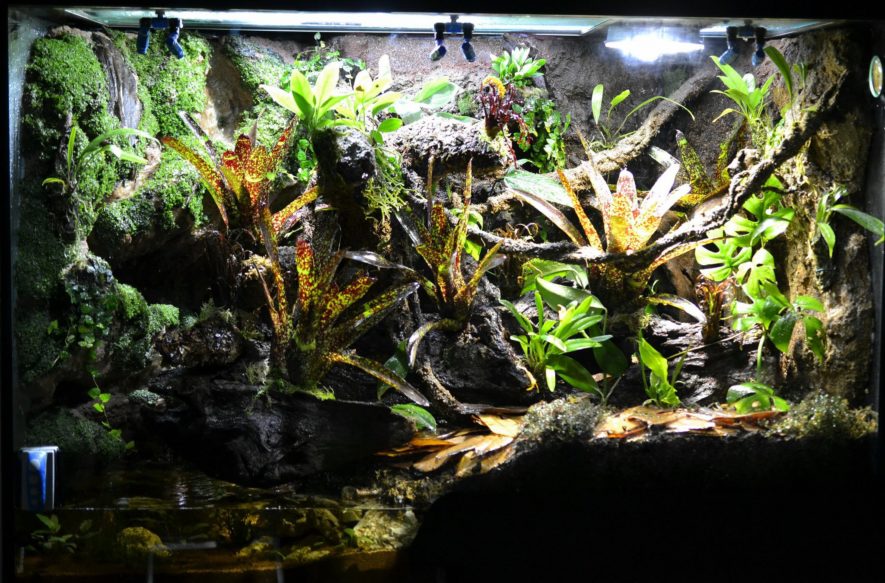
8 Comments
Great info! Would a bioactive terrarium for a young boa constrictor (7 months, ~70cm (27.5inches)) work?
Yes, a bioactive terrarium would be a great housing option for a young boa constrictor. The minimum enclosure size recommended for housing one boa constrictor is at least 4’L x 2’W x 4’H.
However, remember to include hiding places, climbing branches, and a water bowl large enough for the snake to soak in. Also, the substrate should be deep enough to allow for natural burrowing behavior. Lastly, the terrarium should be equipped with a tight-fitting lid to prevent escape.
If you have any further questions, please don’t hesitate to reach out to us again. We’re always happy to help!
Ben, very insightful. Lots of good info. Question for you, does the type of water matter? I have softened water and have read that this, distilled or bottle water is not good for reptiles either. Your thoughts?
Hi Jim,
Bottled spring water is probably the safest to use for rainforest terrariums, although it is important to check the ph of the water as different species require a different ph. You could also filter your tap water and then use a water conditioner such as reptisafe to remove chemicals such as fluoride and chlorine.
Can I sculpt expanding foam to create climbing or basking places for my Horned Mountain Lizard, and Smooth Helmeted Iguana?
Sure, Jason. I don’t see why not as long as your pet’s other needs are met.
Best of luck!
Very informative. Thank you very much for posting.
Glad you liked the article, James!
Thanks for reading.